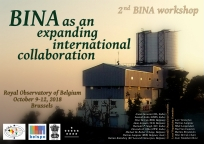Speaker
Girish V
(ISRO)
Description
AstroSat, India’s first dedicated astronomy mission has successfully completed its third year in orbit. The AstroSat observatory carries five astronomy payloads covering from ultraviolet to soft/medium energies to hard X-rays. The data from AstroSat has led to several new scientific results like X-ray polarisation using the Cadmium Zinc Telluride Imager (CZTI) and solving of a twenty years puzzle of a cool red star in NGC 188 which is simultaneously very bright in ultraviolet too with the help of the UltraViolet Imaging Telescopes (UVIT). In addition we have detected beat period in X-rays in a magnetic cataclysmic variable V2400 Oph which makes it a discless intermediate polar. This makes it an unique cataclysmic variable as intermediate polars with their low magnetic fields do not disrupt the accretion disc. I will be summarising this detection and will discuss other exciting results from AstroSat in general.
Primary author
Girish V
(ISRO)

